‘Peoples of Europe, Defend your Holiest Possessions’ (2019)

installation view, June 2019
wood, acrylic paint on MDF, paper, silk, transparencies, LED lights, spotlight, contact microphone, amplifier, speakers, screens. Dimensions variable
|walkthrough video|
A proposition for the active deconstruction of an image.
Starting point: 1895 lithograph entitled ‘Peoples of Europe Defend your Holiest Possessions’ commissioned by then German emperor Wilhelm II, created by artist Herman Knackfuss.

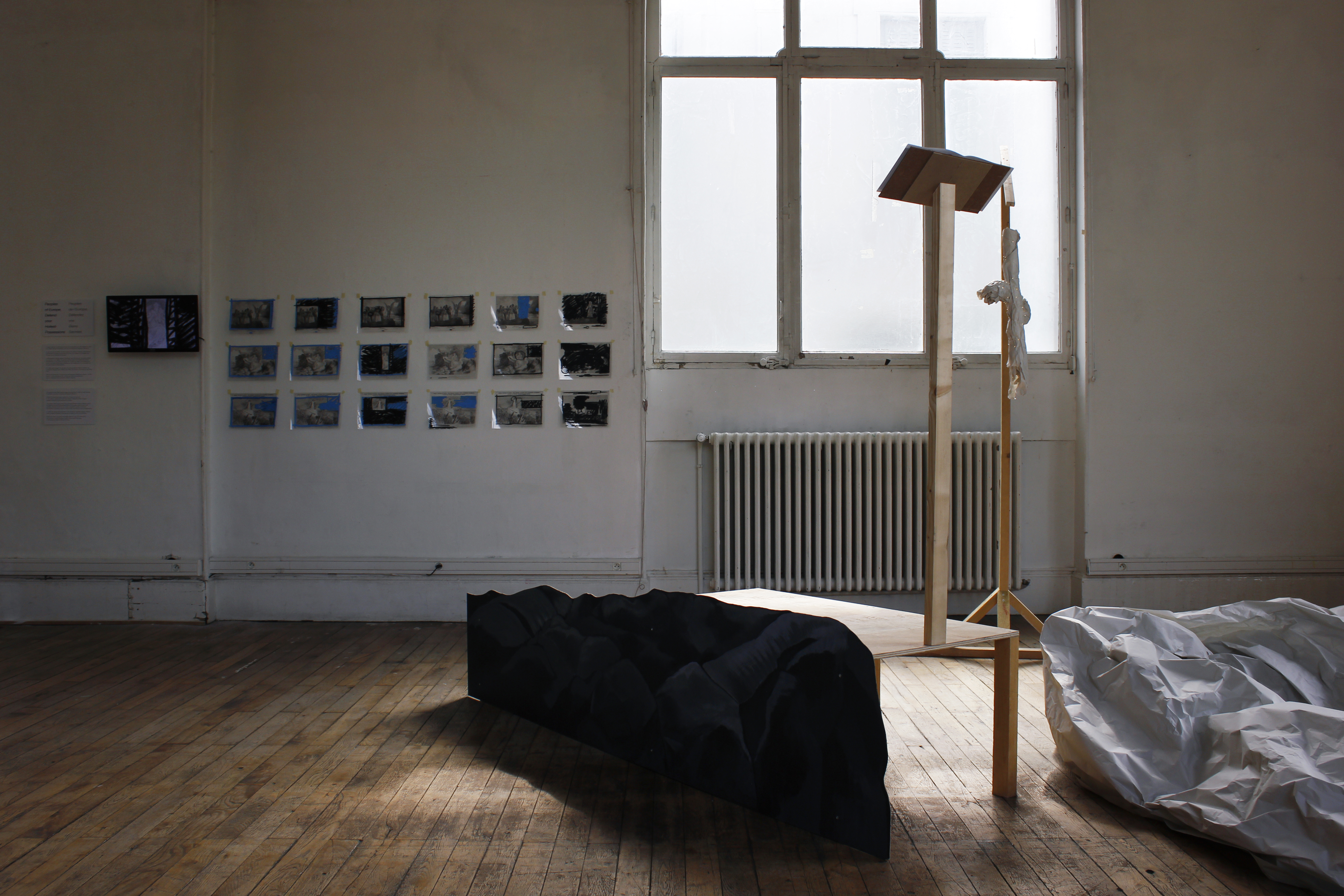
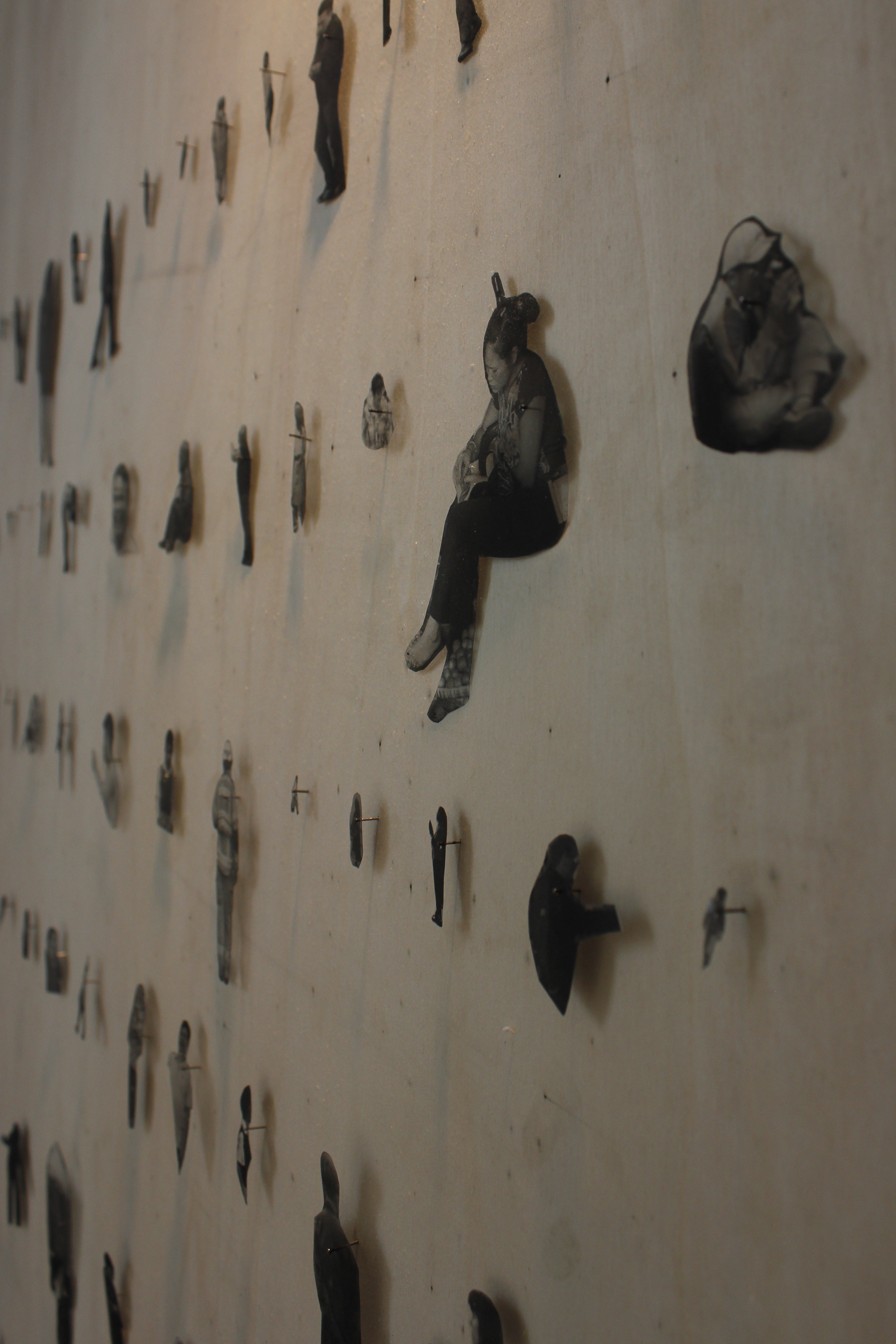
Created in the context of the russo-japanese war, this image called for a European solidarity with Russia built on the fear of difference. On the cliff are imaged feminizations of European nations with a floating cross in the sky above them, and archangel Michael, the biblical figure counted on to announce the apocalypse.
Here, archangel Michael points his finger to the distant horizon, where Asia is reductively represented as a Buddha figure engulfed in flames and murky clouds.
The image was widely circulated in journals such as the American Harper’s Weekly and the French Le Monde Illustré with the legend ‘The Yellow Peril’, which thereby contributed to normalizing the violence of this expression, the effects of which are still tangible today.
Following the popularity of this German image, other European nations such as Italy and Switzerland also produced their own images, referencing respective national values and allegories, but bearing the same racist sentiments.
I linked my research to contemporary Germany, with the desire to understand the role or impact of this image in the construction of the state.
It turns out that at an estimated 125,000, Vietnamese people constitute the largest East Asian community in Germany due to socialist ties that existed from the 1960s on. These Northern Vietnamese contract workers were welcomed in East Germany, but were given no tool to survive autonomously in the foreign state, such as access to language education or the right to celebrate the differences of their cultures.
With the collapse of the Berlin wall in 1989, the situation of the workers became more precarious. The only way by which they could choose to stay in the newly reunified country was through self-employment.
In 2003, ex-contract worker Nguyen Van Hien constructed the Dong Xuan Center on the outskirts of Berlin. This commercial complex geared towards wholesale retailers is an architectural reproduction of a market of the same name in Hanoï, which was constructed in 1889 by the French administration in order to facilitate the collection of taxes during their colonisation of Vietnam.
Who has the right to stay somewhere?
What remains of one’s presence?
What are we constructing?
I translated several elements of the original image to reconstitute it in the physical space.
Here, each member of the public uses their body as the tool of deconstruction, renewing their lectures by moving freely throughout the image to turn and see on the other side of the imaged cliff, for instance, its emptiness.
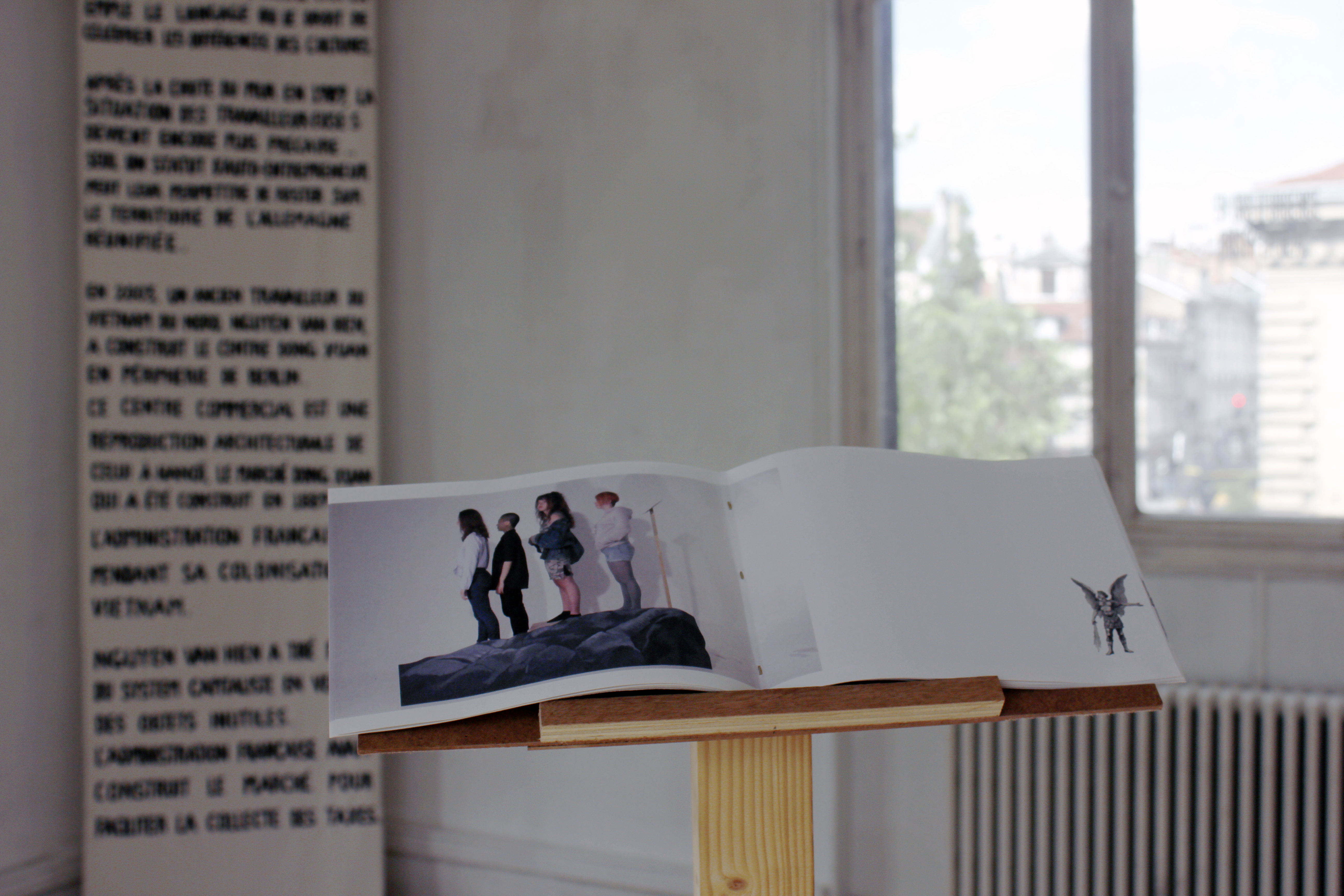
Documentation of work with 1st year students at ESAD-GV: Estelle Bras, Éléonore Brunat, Apolline Blanc

Light-powered buddha purchased at Dong Xuan Center, Berlin.
Contact microphone, amplifier
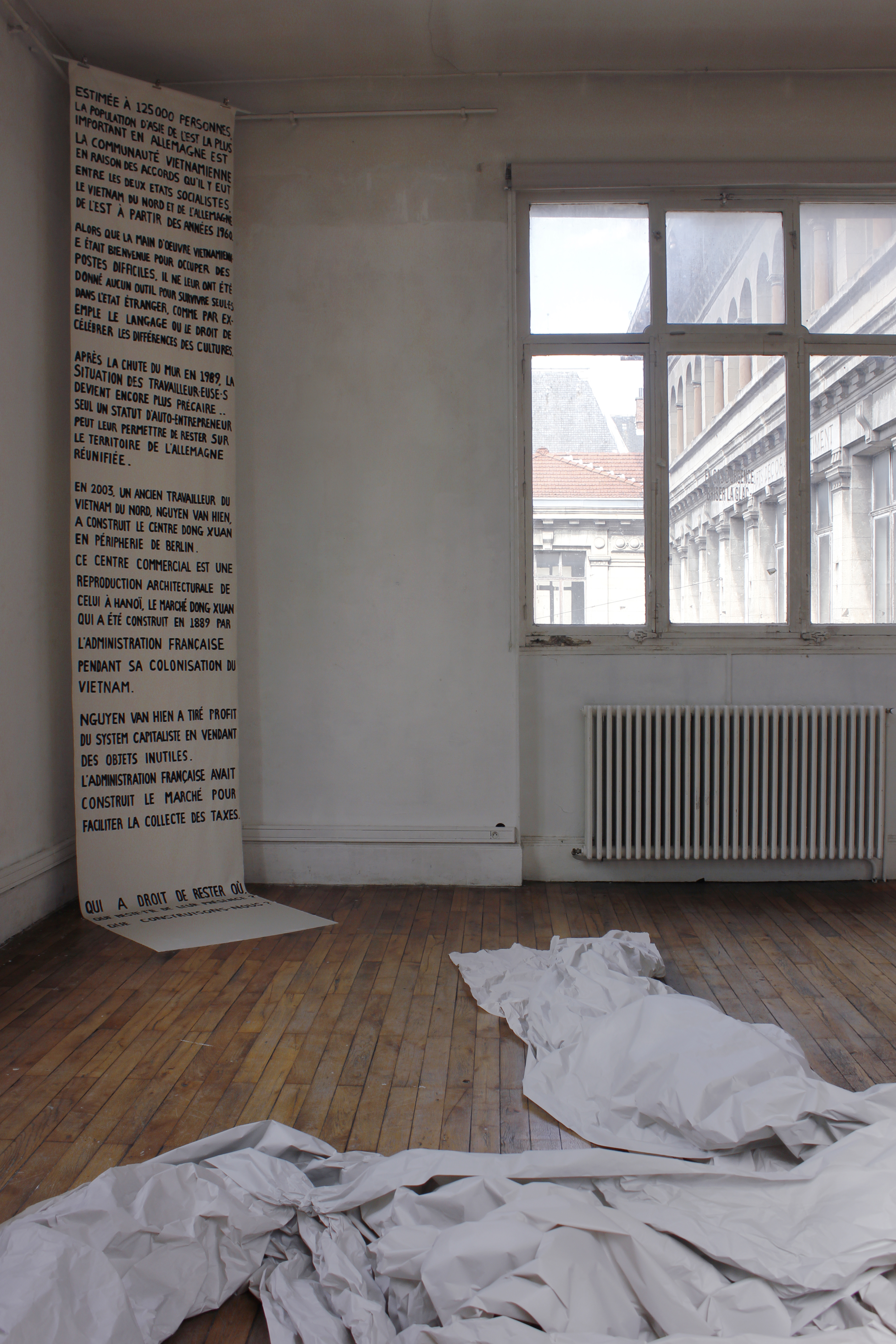
Acrylic on silk
550cm x 90cm
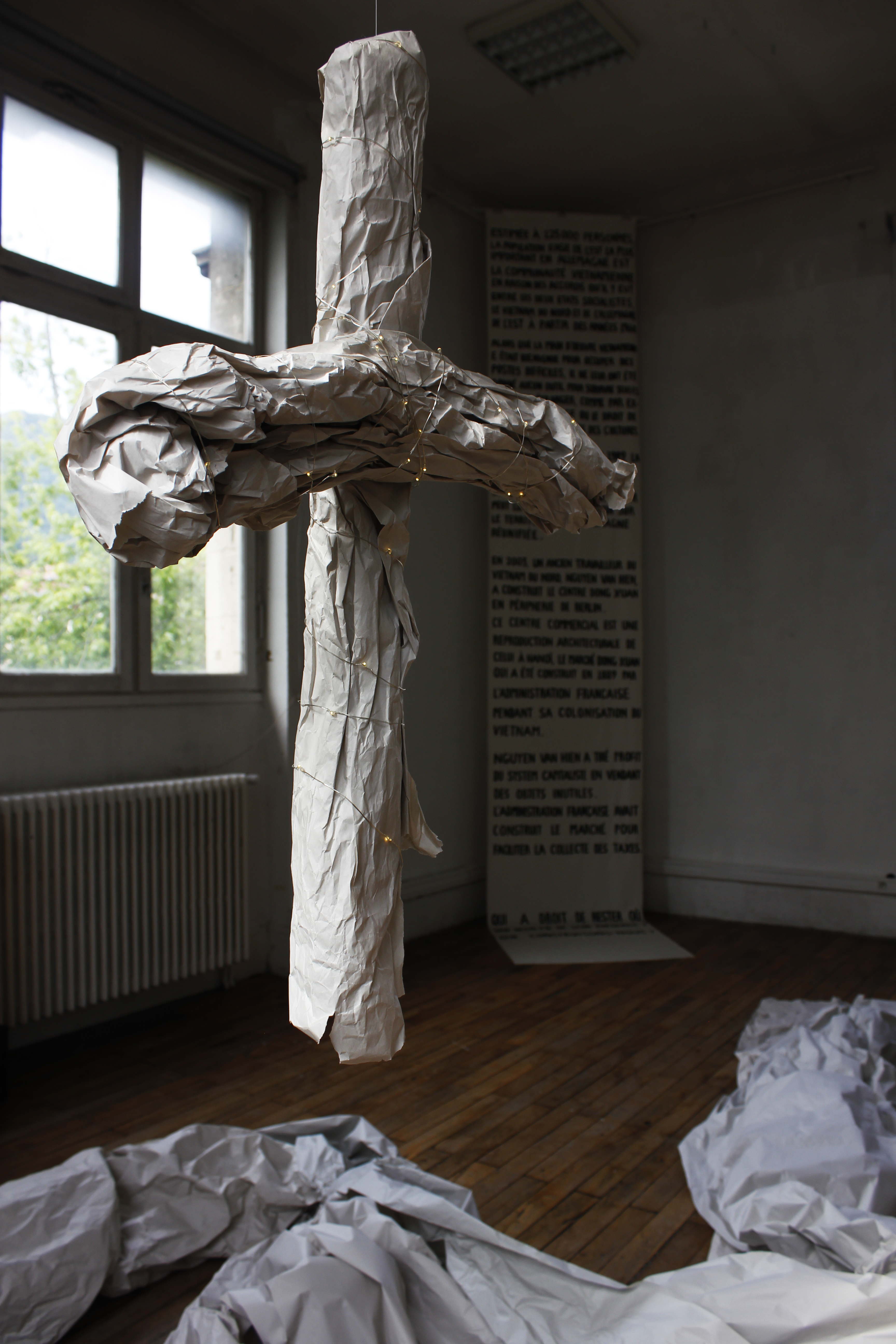
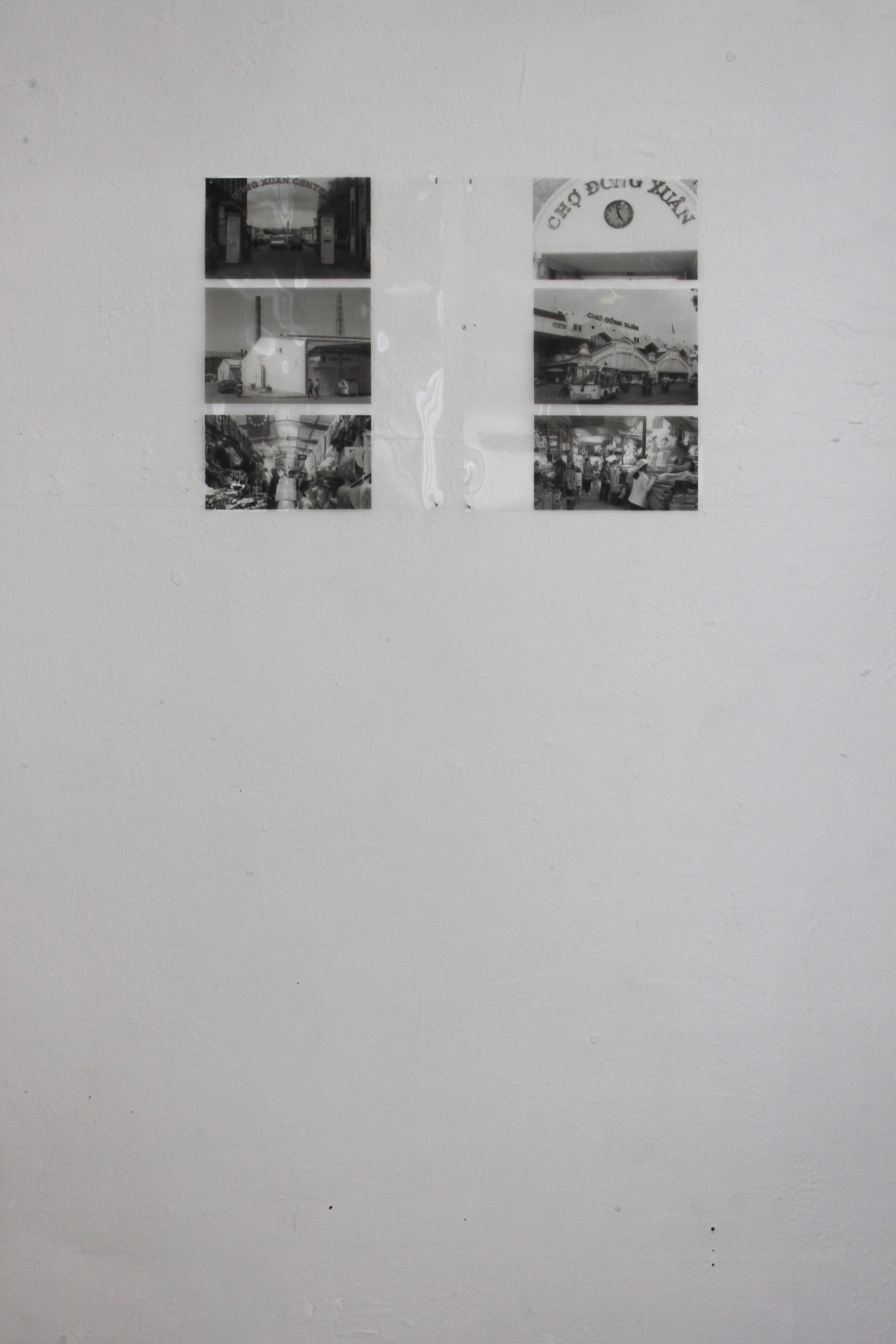 Images of the Dong Xuan Center in Berlin (left), and the Dong Xuan Market in Hanoi (right)
Images of the Dong Xuan Center in Berlin (left), and the Dong Xuan Market in Hanoi (right)